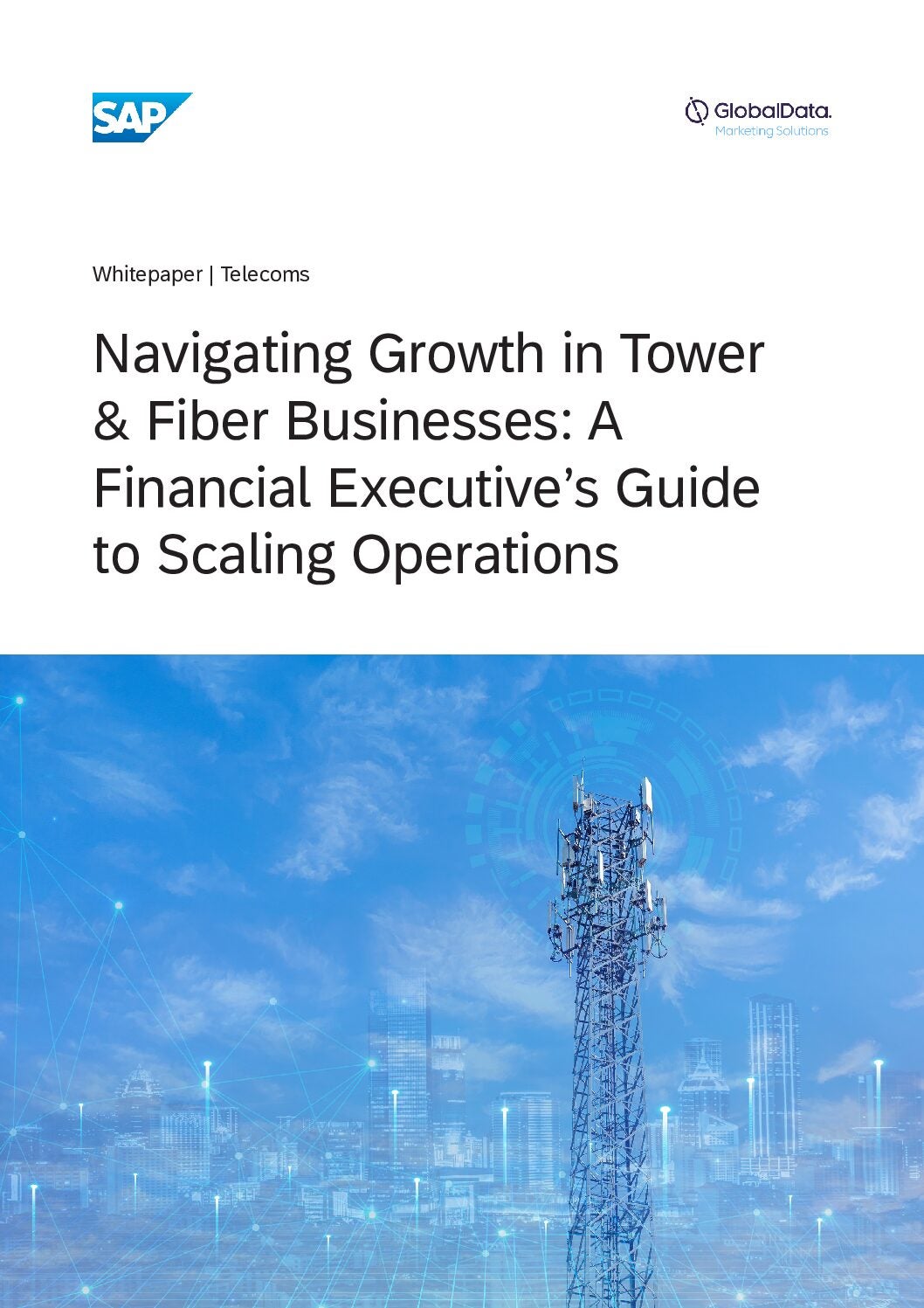
It has been an interesting few years in the towerco sector, with the market undergoing significant consolidation from 2019 onwards. Deal volume reached a peak in 2022, with 38 acquisitions and asset transactions recorded in GlobalData’s Deals database, reaching a total value of US$10.17bn.
Since M&A activity has enabled growing companies to increase their scale and capabilities substantially, this trend has far-reaching implications for towercos' internal operations. By their nature, M&A transactions often disrupt back-office processes, demanding stronger financial management practices and greater visibility into data to achieve intended synergies. They also present an opportunity—if not a necessity—to consolidate and modernise technology stacks, creating a scalable foundation for future growth. For companies navigating this landscape, success will hinge on balancing cautious strategy with bold operational transformation.
The value of M&A
It is no exaggeration to say that M&A has transformed the towerco landscape. For international companies, this strategy has enabled entry into new marketplaces without the need to invest in infrastructure builds. In April 2023, STC acquired more than 4,800 of United Group’s passive sites in Bulgaria, Croatia, and Slovenia, for example, while the acquisition of Portuguese towerco Blue Sites Telco by Everest Infrastructure Partners a few months later marked the US-based towerco’s first steps into Europe.
Such moves enable towercos to diversify their revenue streams, protecting them from disruption or downturn in other markets. According to the GlobalData database, business and geographic expansion were indeed the two most cited reasons for M&A activity by towercos in 2021 and 2022. Interestingly, this rationale has taken a dip in more recent years, while alternative reasons such as the addition of new products and the desire to restructure businesses have begun to rise.
Mobile network operators (MNOs) are another key driving force behind the surge in activity, with an increasing number of operators recognising the value of divesting their towers in order to unlock capital. There are two ways to do this: spin off, as in the case of America Movil and its tower subsidiary Sitios Latinoamerica, or offload the assets to an existing towerco as Japanese MNO NTT Docomo did in September 2023, selling a further 1,553 towers to JTower. Both strategies offer attractive opportunities to monetise assets, freeing up funds for debt reduction and/or supporting new investments.
Towercos have also been carving out their assets to institutional investors, as we saw in January 2024 when Canadian investment company Brookfield Asset Management acquired American Tower Corporation’s (ATC) Indian operations for $2.5 billion.
But it is not just the large players that have been involved with the M&A trend. For smaller and mid-sized companies who lack the funds to build large numbers of assets from scratch, M&A could represent a particularly important growth strategy. In Europe, several deals have been completed that involve mid-sized towercos (revenue $50 million to $2 billion). Most recently, these include Telekom Srbija’s move to divest its macro tower portfolio to a consortium of investors, meanwhile Dayamitra Telekomunisikasi acquired 803 towers in Indonesia – part of the company’s agenda to expand its market share outside Java and increase its number of tenants.
Navigating the aftermath
Mergers, acquisitions and divestures have emerged as a central growth strategy amongst towercos of all shapes and sizes, contributing to a rapidly changing landscape where smaller players have the ability to enter new markets, expand their reach and diversify their offering at pace and scale. But this presents challenges that have the potential to sink a small and medium-sized business if the required systems are not in place to support the company’s restructure, financial compliance, and continued growth.
The integration of an acquired business is a complex process with many hurdles to overcome, from disparate systems to operational alignment and even cultural integration. The success of an acquisition often depends on how quickly and effectively the towerco can incorporate a new business arm into its existing operations. Consolidated financial reporting should be seen as a key priority from the get-go, as this ensures accuracy and compliance – a significant focus during the early stages of an integration.
It is also important to remember that while revenue growth is the number one goal of M&A, it is not a guarantee. This is because streamlined operations are essential to realising the synergies that motivated the transaction, requiring full integration of procurement and supply chain operations as well as removal of any redundant processes that could stifle long-term growth. As the transition takes shape, there must be continued optimisation of key business functions in order to drive efficiencies and reduce costs. This demands real-time visibility into data across the organisation, enabling CFOs to effectively monitor the performance of the new business and make strategic, well-informed decisions that help the company unlock the full value of the acquisition.
As successful business outcomes materialise and the possibility and desire for further transactions grows, financial visibility also becomes pivotal for ensuring the success of future ventures and expansions. This provides the CFO with a solid grasp of the company’s current financial position and can also help to identify the right opportunities for future acquisitions. As CFOs know all too well, an inaccurate valuation of a target company at this early stage could result in significant financial consequences later down the line.
Overall, the importance of advanced analytics and enterprise resource planning (ERP) tools throughout the M&A lifecycle cannot be overlooked, since the centralised data management that comes from having a solid financial operations core makes a huge difference to the likelihood of an acquisition’s success and the ability of the towerco to maintain business continuity and minimise risks as it continues its growth trajectory.
With so many companies recognising their need for ERP while in the throes of an integration, M&A frequently provides the perfect moment for technology modernisation. This is often the case for smaller and mid-sized companies who may be yet to make the migration to modern enterprise planning infrastructure built on public cloud, for example. And while this decision is usually driven by the need for companies to consolidate their processes in a single platform while accelerating financial reporting, optimising logistics, and enhancing operational efficiencies, it also provides a strong yet flexible foundation for future growth, whatever direction that may take.
Ultimately, CFOs who can effectively steer their companies through the complexities of a merge or acquisition will be well-positioned for success in this dynamic environment where inorganic growth is still an attractive prospect for up-and-coming towercos looking to make their mark in new territories. With the right ERP framework supporting you along the way and enabling business visibility at the time it is needed the most, high growth – minus its risks – is in reach.
To learn more about the financial challenges of scaling a towerco or fiberco, both inorganically and organically, and the importance of a central financial operations core to enabling business visibility, please download the whitepaper below.



